If you’re a coffee lover, Grind Coffee has got your back with a fantastic range of blends that seriously hit the spot. Their beans are sourced from top-notch farms, ensuring you get freshness in every cup. Whether you like light, medium, or dark roasts, they have you covered with flavors that make your morning brew special.
Grind Coffee
Freshly roasted coffee that bursts with flavor in every cup
Product List
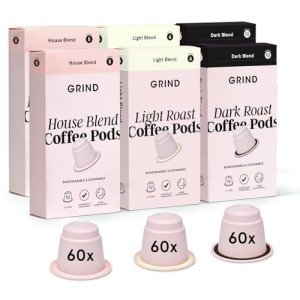
Variety Blend Coffee Pods - 60 Count
Grind
Product Review Score
4.67 out of 5 stars
208 reviewsSGD 44.05
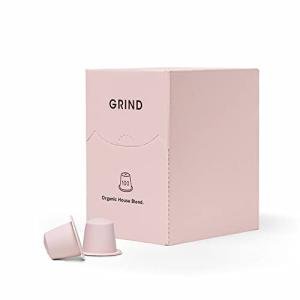
Grind House Coffee Pods - 100 Count
Grind
Product Review Score
4.28 out of 5 stars
163 reviewsSGD 75.93
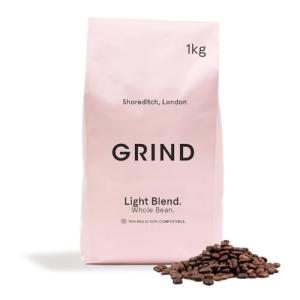
Light Roast Arabica Beans – 1kg
Grind
Product Review Score
4.37 out of 5 stars
100 reviewsSGD 51.74
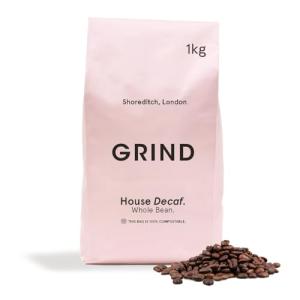
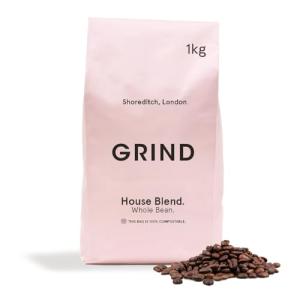
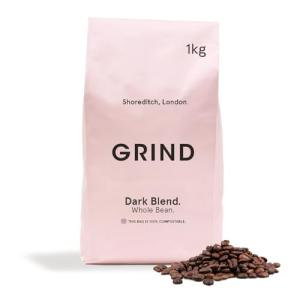
Dark Roast Arabica Beans
Grind
Product Review Score
4.14 out of 5 stars
40 reviewsSGD 51.74 SGD 38.80
Coffee lovers around the world understand that the journey to a perfect cup begins long before the water meets the ground beans. The grind size of coffee not only influences the flavor but also plays a critical role in the brewing process. In this comprehensive guide, we’ll delve into the types of coffee grinders, the importance of grind size, the science behind extraction, and answer some frequently asked questions.
Understanding the Importance of Grind Size
The grind size of coffee beans can profoundly affect the brewing process and the final flavor profile of the beverage. When coffee beans are crushed and ground, a variety of chemical compounds and oils are released, which contribute to taste and aroma. However, the extraction of these compounds is highly dependent on the grind size.
Extraction Time and Grind Size
Here’s a brief overview of how different grind sizes can affect extraction time:
| Grind Size | Brewing Method | Extraction Time |
|---|---|---|
| Coarse | French Press, Cold Brew | 4-12 minutes |
| Medium-Coarse | Pour Over, Percolator | 3-4 minutes |
| Medium | Drip Coffee Maker | 4-6 minutes |
| Medium-Fine | AeroPress | 2-3 minutes |
| Fine | Espresso | 25-30 seconds |
| Extra Fine | Turkish Coffee | 10-15 seconds |
Types of Coffee Grinders
When it comes to grinding coffee, selecting the right grinder is crucial. There are two main types of coffee grinders: blade grinders and burr grinders. Each type has its own pros and cons that can impact the quality of the grind.
Blade Grinders
Blade grinders use a spinning blade to chop coffee beans. They are typically less expensive and more portable.
Pros:
- Inexpensive and widely available.
- Compact and easy to store.
Cons:
- Inconsistent grind size, which can lead to uneven extraction.
- Generates heat which can affect flavor.
Burr Grinders
Burr grinders crush coffee beans between two surfaces (burrs), providing a more uniform grind size.
Pros:
- Produces consistent grind size for optimal extraction.
- Available in manual and electric versions.
Cons:
- Generally more expensive than blade grinders.
- Requires more maintenance and cleaning.
The Different Grind Sizes
Understanding various grind sizes is essential for achieving the desired flavor profile. Below is a detailed overview of common grind sizes and their uses:
- Coarse Grind: Typically used for brewing methods like French Press and cold brew. The granules are similar in size to sea salt.
- Medium-Coarse Grind: Best for pour-over and drip methods, with granules resembling rough sand.
- Medium Grind: The standard grind size for automatic drip coffee makers. It has a consistency similar to table salt.
- Medium-Fine Grind: Ideal for Aeropress and pour-over, where a slightly finer grind is needed for better extraction.
- Fine Grind: Used for espresso machines. The texture is powdery, similar to flour.
- Extra Fine Grind: Used for Turkish coffee. The grind is extremely fine, resembling powdered sugar.
The Science Behind Extraction
To appreciate the importance of grind size, one must understand the principles of extraction. Extraction refers to the process by which water solubles are drawn out of coffee grounds during brewing. Factors that influence extraction include:
- Grinding: Finer grinds increase surface area, allowing for better extraction but leading to over-extraction if the brewing time is extended.
- Brewing Temperature: Hotter water extracts coffee solubles faster.
- Brewing Time: Longer brewing times increase extraction. However, if brewed too long, coffee can become bitter.
Having a clear understanding of how these factors interact can lead to a more controlled and enjoyable brewing experience.
Common Grinding Mistakes
Even seasoned coffee enthusiasts can succumb to common grinding mistakes. Below are some pitfalls to avoid:
- Inconsistent Grind Size: A mixed grind size can lead to uneven extraction.
- Ignoring Freshness: Pre-ground coffee can lose flavor quickly. Grinding just before brewing is recommended.
- Using the Wrong Grind for Brewing Method: Each brewing method requires a specific grind size for optimal extraction.
Frequently Asked Questions (FAQs)
Q: How fine should I grind my coffee for espresso?
A: For espresso, aim for a fine grind that resembles powdered sugar.
Q: Can I use a blade grinder for espresso?
A: While it’s possible, blade grinders produce inconsistent sizes which can lead to poor extraction. A burr grinder is recommended for espresso.
Q: Why does my coffee taste bitter?
A: Bitter flavors often result from over-extraction, which can be caused by using a grind that is too fine, an overly long brewing time, or excessively high water temperature.
Q: How often should I clean my coffee grinder?
A: It’s advisable to clean your grinder every few weeks to prevent old coffee oils and grounds from affecting flavor.
Q: Can I grind flavored coffee?
A: It’s best to use a dedicated grinder for flavored coffee to avoid mixing flavors.
Grinding coffee is an essential step in achieving a delicious cup. Understanding the significance of grind size, choosing the right grinder, and avoiding common mistakes can help coffee enthusiasts elevate their coffee experience. By grasping the science behind extraction, coffee lovers can appreciate the multitude of flavors that their beloved beans can offer. Happy brewing!